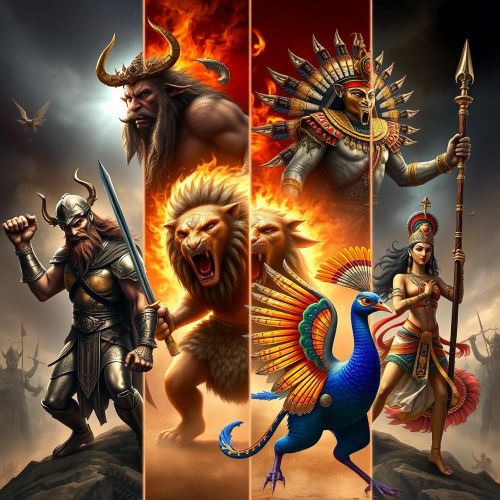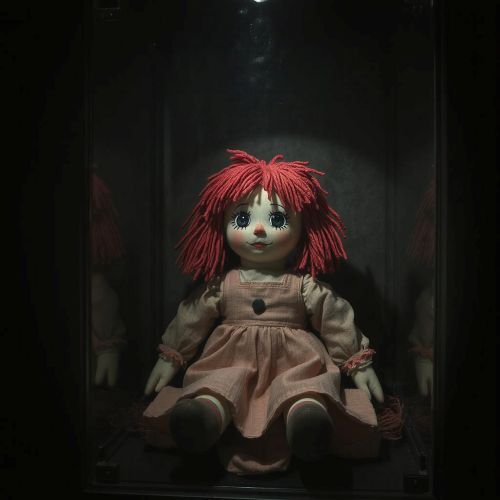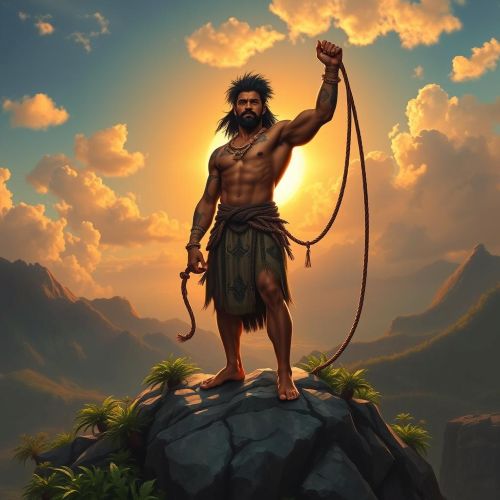7 Powerful Goddesses of Sex from Mythology Around the World
Sex, love, and fertility have always been essential to human existence, and cultures across the world have honored these primal forces through divine figures—especially the powerful goddess of sex. These goddesses embodied not just physical desire but also emotional intimacy, reproduction, transformation, and feminine mystique. From Africa to Asia and Europe to the Americas, every culture had a deity—often a goddess—who represented the sacred nature of sexuality.
In this article, we explore iconic figures known as the goddess of sex, along with male counterparts and lesser-known deities, revealing the rich diversity of sensual divinity throughout mythology.
Oshun – The African Goddess of Sex and Sensual Power
In Yoruba mythology from West Africa, Oshun stands out as the supreme goddess of sex, fertility, love, and beauty. Worshipped as one of the most important Orishas, Oshun governs rivers and fresh water, often linked to life-giving energy and sensual fluidity. She is depicted as a radiant woman clad in yellow or gold, adorned with mirrors and honey, which symbolize beauty, attraction, and sweet sensuality.
More than just a goddess of sex, Oshun also represents feminine power and healing. Her rituals include music, dance, and offerings to attract love or enhance fertility. In many diasporic faiths like Santería and Candomblé, Oshun continues to be actively worshipped today, especially by women and LGBTQ+ communities who find empowerment in her fluid, nurturing, and fiercely passionate nature.
Aphrodite – Greece’s Timeless Goddess of Sex and Love
The quintessential goddess of sex in Greek mythology is Aphrodite. Born from the sea foam, she was revered as the goddess of love, beauty, passion, and erotic desire. Her Roman equivalent, Venus, held similar sway in Roman culture. Aphrodite was worshipped in temples where sacred sexuality and love were celebrated rather than suppressed.
Her influence spanned from intimate relationships to political unions and even warfare. Aphrodite’s lovers included both gods (like Ares) and mortals (like Anchises), making her one of the most dynamic and influential goddesses of sex in any mythology. Even today, she remains a cultural symbol of female allure and sexual empowerment.
Rati – Hindu Goddess of Passion and Erotic Pleasure
While Kamadeva is the Hindu god of love, his consort Rati is equally powerful as the goddess of sex and desire. Rati is described in classical texts as beautiful, sensual, and enchanting. Her name literally means “pleasure” or “passion,” and she plays a vital role in Hindu mythology by restoring balance through love and sensual union.
Rati is also deeply associated with fertility and emotional intimacy. Her presence in Hindu scripture is particularly important in texts like the Kama Sutra, where sensual pleasure is not only acknowledged but celebrated as one of the four goals of life (Purusharthas). In her stories, Rati’s unwavering devotion and sensual strength help bring Kamadeva back to life after his destruction by Lord Shiva, reinforcing her role as a divine partner in restoring harmony.
Ishtar (Inanna) – Mesopotamian Goddess of Sex and War
In ancient Mesopotamian mythology, Ishtar (or Inanna in Sumerian texts) was a powerful and multifaceted goddess. She ruled over love, fertility, war, and sexuality. As a goddess of sex, she represented both physical desire and spiritual transformation.
Ishtar’s myths are among the oldest recorded stories, and her descent into the underworld is a powerful metaphor for the cycles of life, death, and rebirth. Her temples often featured sacred sexual rituals, with priestesses and priests engaging in practices believed to invoke divine favor. Her unrestrained sexuality and duality as both lover and warrior made her one of the most complex and respected figures in ancient worship.
Tlazolteotl – Aztec Goddess of Lust and Purification
The Aztecs revered Tlazolteotl as the goddess of sex, lust, sin, and purification. She embodied paradoxes—simultaneously encouraging sexual expression and offering spiritual cleansing. Tlazolteotl’s name translates to “Eater of Filth,” referring to her power to absorb human sin, particularly those of a sexual nature.
Unlike other deities, she did not judge but cleansed. In Aztec society, confession to Tlazolteotl was a sacred ritual, especially for those who had engaged in illicit or taboo relationships. She empowered people to embrace their sexuality while also recognizing the need for emotional and spiritual healing. Her worship was a unique blend of eroticism and morality.
Xochiquetzal – Aztec Goddess of Love and Procreation
Another key figure from Aztec mythology is Xochiquetzal, the goddess of sex, fertility, female beauty, and childbirth. Her name means “Precious Flower,” symbolizing delicate yet powerful femininity. Unlike her counterpart Tlazolteotl, Xochiquetzal’s domain was more aligned with youthful desire, marital fidelity, and erotic charm.
She was believed to watch over lovers, brides, artisans, and even sex workers, offering blessings of sensual connection and fertility. During her festivals, participants wore floral garments, masks, and engaged in ritual dancing—a celebration of life, fertility, and the joy of erotic union.
Freya – Norse Goddess of Sex and Magic
Freya from Norse mythology is often misunderstood solely as a war goddess, but she is also a powerful goddess of sex, love, and beauty. Ruling over the domain of Seidr (a form of magic), Freya used her allure and mysticism to influence fate and desire. She was said to have many lovers among gods and mortals and was never shamed for her open sexuality.
Freya’s chariot drawn by cats, her cloak of falcon feathers, and her jewel Brísingamen all symbolize various aspects of her sensual and magical powers. In a culture that celebrated valor and strength, Freya’s ability to wield sexuality as a divine force speaks volumes about how Norse society viewed feminine power.
Modern Interpretations and Legacy
Today, the goddess of sex has become a symbol of liberation and empowerment. These ancient deities continue to inspire modern art, feminism, spirituality, and LGBTQ+ movements. In a world that often compartmentalizes sexuality, these divine figures remind us that sensuality, fertility, and desire are natural, sacred, and deeply human experiences.
Whether worshipped for love, fertility, protection during childbirth, or empowerment of sexual identity, the goddess of sex remains a central archetype in mythologies and modern culture alike. Their stories continue to spark conversations about gender, pleasure, divinity, and human connection.
Conclusion: The Divine Feminine of Desire
The role of the goddess of sex is not just to symbolize eroticism but to remind us that sexuality is divine. From Oshun’s rivers to Aphrodite’s seashell, from Rati’s passion to Tlazolteotl’s purification—each goddess offers a different lens on love, lust, and life.
If you know of more powerful figures that should be featured in our ongoing exploration of divine sensuality, let us know. Mythlok is always looking to honor the mythological roots that still shape our modern understanding of intimacy and pleasure.





